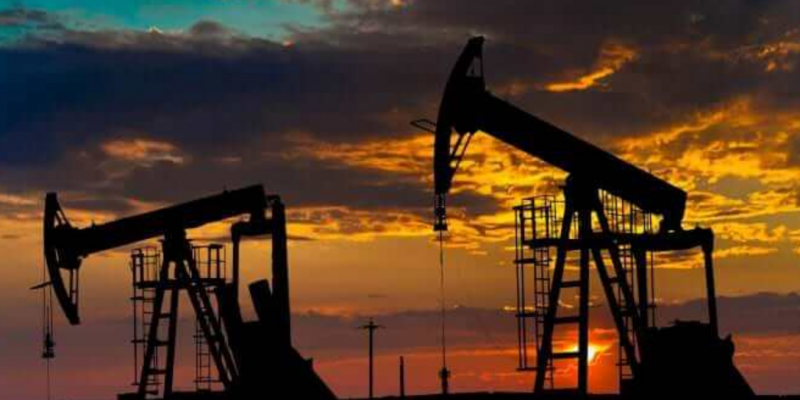“There are none so blind as those who will not see.” — John Heywood in 1546

The COVID-19 pandemic is over, and we were promised a slow but steady return to pre-pandemic economic conditions and investment returns. But that hasn’t happened. Every time we purchase commodities and services, prices are higher, yet again.
I was advised to diversify my 401K investments into domestic and international funds, inclusive of stocks and bonds. I followed the advice of financial experts, but my 1-year and 3-year investment returns are abysmal.
I considered massive portfolio transfers to cash, but realized that overall inflation is 8.2% and rising. My retirement investments are shrinking in absolute financial terms, and what is left has reduced purchasing power because of rampant inflation.
The pervasive financial news abstractions that the “economy is strong”, and the mantra of “we have nothing to fear but fear itself” rings hollow. I am told that a few small Federal Reserve rate hikes will solve the inflationary pressures, and that historical investment strategies are sound and to stay the course. I discern that the Wall Street and federal policies are ineffectual, and rightfully conclude I am being gaslighted. I observe the U.S. economy is in a recession with two consecutive quarters of negative GDP, despite denials by many economic experts.
Senior citizens have experienced multiple recessions in their lifetimes. The current 2022 recession is most similar to the July 1981—November 1982 recession due to stagnation (the hallmark of both being a sluggish economy with a high rate of inflation).


The last time the U.S. experienced an inflation rate of 8% was 1979—1981. Federal Reserve Chairman Paul Volcker reluctantly raised the prime interest rate to historical highs to tame inflation. The concomitant result was historically high 30-year fixed rate mortgages. I know because my home mortgage rate in 1982 was 15.875%.
Inflationary pressures remain in place, caused by recent massive governmental spending, pent-up demand from the COVID-19 pandemic, and wage inflation because of historically low unemployment. The Federal Reserve Board will continue to use the hammer in its toolbox to tamp down inflation by cooling the demand for goods and services by raising the prime interest charged to lending financial institutions. The below graph illustrates the correlation of the 30-year fixed mortgage rate and the average annual inflation rate. I expect the current 30-year fixed rate mortgage of 5.1% will be increased, and believe the current recession duration will minimally equal the 16-month recession of 1981–1982.

The near term outlook for energy usage and demand are documented in the October 2022 report by the U.S. Energy Information Administration. It states winter energy expenditures are likely to be higher than the previous winter. Energy prices will likely rise in the near term, causing higher prices for goods and services tied to energy consumption. Low energy inventories “creates the possibility for high price volatility and price spikes, particularly if the weather turns out to be very cold.”
Advertisement

As energy prices rise, so do food prices. Energy expenses account for at least 50% of the cost of food. Fertilizer prices are integrally linked to its raw material costs (natural gas), and the costs of harvesting and transportation (diesel fuel). Current natural gas and diesel fuel prices are volatile. Asian and European businesses and residents are paying as much as five times more than their American counterparts for natural gas.

Natural gas prices could triple or quadruple this winter. As noted below, “futures and options markets data implies the 95% confidence interval for Henry Hub (USGC) prices in early 2023 ranges from $2 to $22 [per million BTU’s].” Inflation will re-ignite.

Distillate fuel inventories used for home heating and transportation are at historic lows, increasing the likelihood of price increases on home heating and food. The October 2022 report of the U.S. Information Administration expects retail heating oil prices to be 16% higher than last winter.

Crude oil prices are near historic highs, with limited global supplies because of the Russian boycott by Europe and the U.S., and price volatility is a given.

These Biden administration policies have contributed to energy inflation and inhibit economic recovery:
- Stopping the construction of the Keystone pipeline to transport crude oil to the USGC for refining.
- Shutting down of new offshore and on-shore drilling leases on public lands for crude oil and natural gas production.
- Targeting the shutdown of coal generation power plants.
- Renewing U.S. participation in the Paris Accords to limit carbon emissions.
- Abstaining from the construction of nuclear generation power plants, which ironically have a zero carbon emission foot print.
There cannot be a national or global economic recovery with the intentional destruction of the cheapest forms of energy. Since the beginning of civilization, it has relied on the burning of carbon for heating and energy usage. Wood is 50% carbon, natural gas is 75% carbon, distillate is 85% carbon, and coal is 90+% carbon. EV’s are not carbon neutral, they transfer the burning of carbon from the combustion engine to coal, natural gas, and nuclear power generation plants. Politicians are demagogues who profess historical energy industries can be eliminated and replaced by wind and solar alternatives. These regressive policies hurt the poorest amongst us the most — it is stupidity on steroids.
REFERENCES:
- WTI Prices: https://www.statista.com/statistics/266659/west-texas-intermediate-oil-prices/
- 30 Year Interest Rate: https://usafacts.org/data/topics/economy/economic-indicators/economic-indicators-and-actions/mortgage-interest-rate/
- Recessions: https://usafacts.org/articles/what-is-a-recession-what-have-recessions-looked-like-in-the-past/
- Crude Oil Spot Prices: https://usafacts.org/data/topics/economy/economic-indicators/economic-indicators-and-actions/crude-oil-spot-price/
- Inflation Rates: https://usafacts.org/data/topics/economy/economic-indicators/economic-indicators-and-actions/inflation-rate-yearly-average/
- Inflation 2022: https://www.cnbc.com/2022/10/13/heres-the-inflation-breakdown-for-september-2022-in-one-chart.html
- Crude Prices 2022: https://www.statista.com/statistics/326017/weekly-crude-oil-prices/
Advertisement
Advertisement

